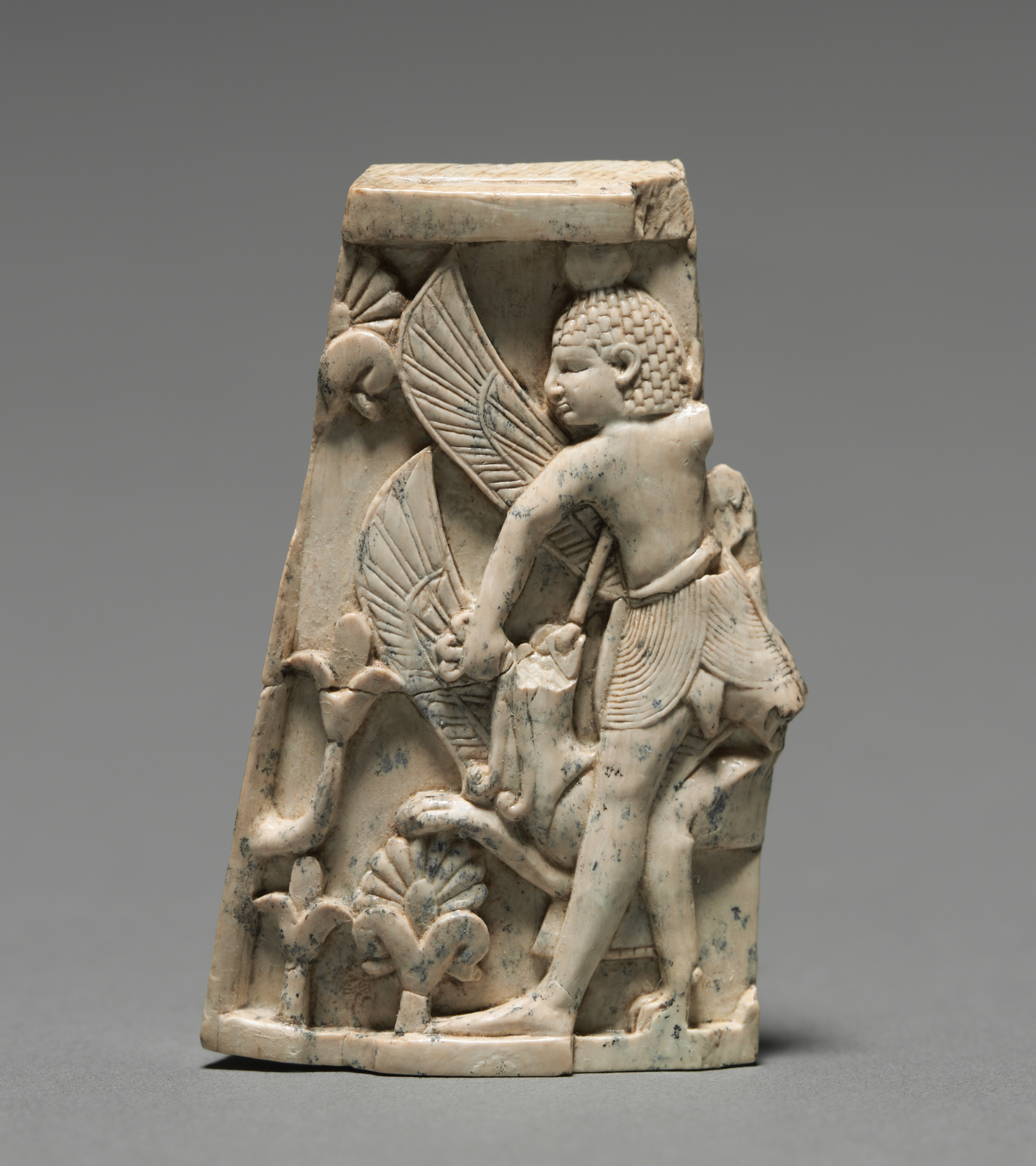The Cleveland Museum of Art
Collection Online as of April 18, 2024

Decorative Plaque: Man; and Griffin in Combat
900–800 BCE
Overall: 6.5 x 3.9 cm (2 9/16 x 1 9/16 in.)
Location: 102A Ancient Near East
Description
This small plaque was executed in the Phoenician style with symmetrical compositions, elongated figural proportions, and Egyptian subjects and motifs. Examples have been found throughout the Middle East, but thousands come from Nimrud where most were excavated in the storerooms of a military arsenal built by King Shalmaneser II (858-824 bc). When the Nimrud palace was sacked in the 7th century bc, these ivories were thrown into a well, where Sir Max Mallowan (the husband of Agatha Christie) discovered them in 1951. The monumental wall relief (1943.246) was found at the same Assyrian palace at Nimrud.- 1951-1968British School of Archaeology in Iraq1968-The Cleveland Museum of Art, Cleveland, OH
- Lee, Sherman E. "The Year in Review for 1968." The Bulletin of the Cleveland Museum of Art 56, no. 1 (1969). p. 5 www.jstor.orgThe Cleveland Museum of Art. Handbook of the Cleveland Museum of Art/1978. Cleveland, OH: The Cleveland Museum of Art, 1978. Reproduced: p. 3 archive.orgThe Cleveland Museum of Art. Handbook of the Cleveland Museum of Art. Cleveland, OH: The Cleveland Museum of Art, 1991. Reproduced: p. 7 archive.orgHerrmann, Georgina. Ancient Ivory: Masterpieces of the Assyrian Empire. London: Thames & Hudson, 2017. Reproduced: p. 185, fig. 293
- Atikot: 5,000 Years of Civilization in Israel. The Temple Museum of Religious Art, Cleveland, OH (May-September 1, 1969).Year in Review: 1968. The Cleveland Museum of Art, Cleveland, OH (organizer) (January 29-March 9, 1969).
- {{cite web|title=Decorative Plaque: Man; and Griffin in Combat|url=false|author=|year=900–800 BCE|access-date=18 April 2024|publisher=Cleveland Museum of Art}}
Source URL:
https://www.clevelandart.org/art/1968.45